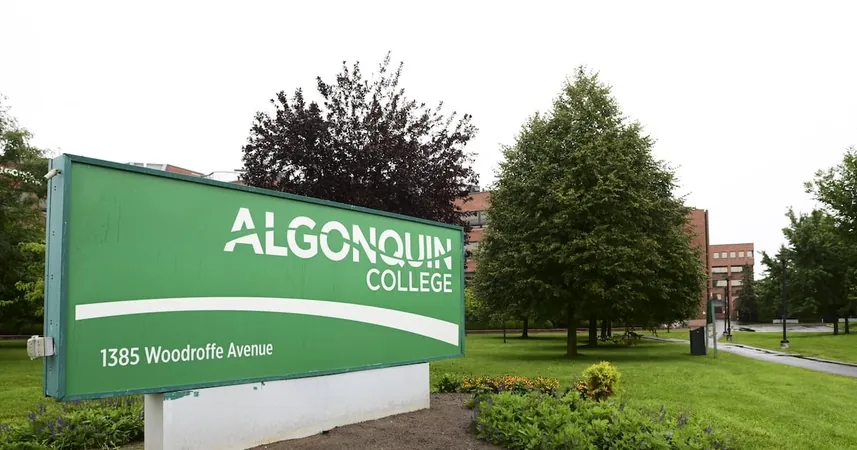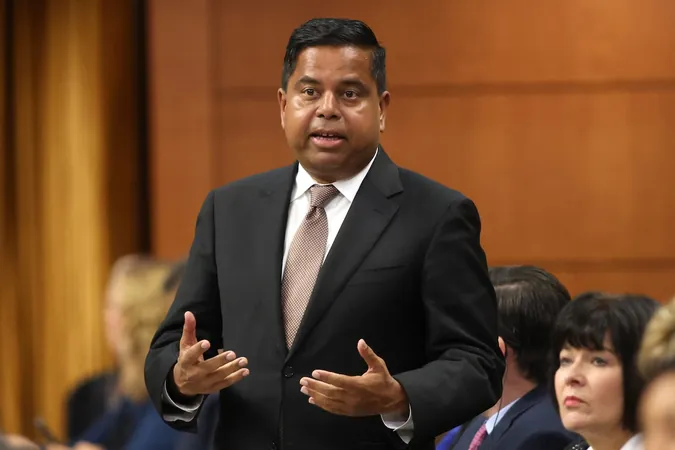
Ontario Colleges and Universities Grapple with Job Cuts as International Student Cap Takes Effect
2024-11-23
Author: Sophie
Introduction
Ontario's higher education landscape is reeling from the recent federal government cap on international students, leading to significant job cuts, financial deficits, and, in some cases, temporary campus closures.
Impact on Institutions
One institution severely impacted is St. Lawrence College in Kingston, which has recently eliminated 30 positions from its administrative and support staff. The college's president, Glenn Vollebregt, indicated that a dramatic 50% drop in international student enrollment could lead to further layoffs as the college undergoes a provincewide efficiency review, expected to conclude early next year. Despite these cuts, the college remains committed to hiring essential positions, such as a director of Indigenous services.
Mohawk College in Hamilton has followed suit, warning staff of impending layoffs, while Seneca Polytechnic plans to temporarily close its Markham Campus due to declining enrollment, displacing students to other locations. This closure reflects broader concerns across the sector, as post-secondary institutions cope with significant financial uncertainty brought on by the federal government's decision to issue 300,000 fewer international student permits over the next three years, hitting Ontario particularly hard.
Economic Contribution of International Students
Michael McDonald, of Colleges and Institutes Canada, emphasized the considerable economic contribution international students make to Canada, accounting for nearly $31 billion and over 360,000 jobs in 2022. However, due to the new cap, about 70% of college programs no longer qualify for post-graduation work permits, raising alarm bells for many institutions.
Projected Deficits and Job Cuts
Sean Coffey from Mohawk College projected a staggering $50 million deficit for the 2025/26 academic year, a reality that will inevitably lead to job cuts affecting all areas of the college. Algonquin College is similarly bracing for a reported revenue loss of $32 million, claiming an enrollment shortfall of 2,400 students compared to last year’s estimates. While discussions about job cuts are underway, no decisions have been reached.
Effects on Universities
Across the province, Ontario universities are not immune—many are witnessing the ripple effects of reduced international enrollment. The University of Windsor has reported a $10 million deficit this year, which may swell to $30 million next year, compounded by a domestic tuition freeze. Clinton Beckford, the university's vice-president, warned staff to prepare for immediate and ongoing layoffs affecting all employee categories.
Carleton University also amended its projected deficit from $26 million to significantly higher figures, citing declines of 55% in international undergraduate and 35% in graduate enrollment. The financial crisis facing universities is stark; Steve Orsini from the Council of Ontario Universities stated it could result in $300 million in losses this year alone, with projections doubling next year.
Calls for Action
Critics are calling for provincial action to increase grants for universities and remove existing caps on domestic student funding. Orsini warned that without quick government intervention, Ontario risks losing vital talent and research capability essential for economic growth.
Government's Response
Despite the mounting financial pressure, a spokesperson for the Minister of Colleges and Universities claimed that funding for post-secondary institutions is the highest it has ever been, at $1.3 billion announced this year. However, the province maintains that the decision for layoffs rests with individual colleges and universities, asserting they will not increase costs for students by raising tuition.
Conclusion
As the situation continues to unravel, the impact on academic programs and student support services promises to deepen, raising urgent questions about the future viability of Ontario's educational institutions in a post-pandemic economy.









 Brasil (PT)
Brasil (PT)
 Canada (EN)
Canada (EN)
 Chile (ES)
Chile (ES)
 España (ES)
España (ES)
 France (FR)
France (FR)
 Hong Kong (EN)
Hong Kong (EN)
 Italia (IT)
Italia (IT)
 日本 (JA)
日本 (JA)
 Magyarország (HU)
Magyarország (HU)
 Norge (NO)
Norge (NO)
 Polska (PL)
Polska (PL)
 Schweiz (DE)
Schweiz (DE)
 Singapore (EN)
Singapore (EN)
 Sverige (SV)
Sverige (SV)
 Suomi (FI)
Suomi (FI)
 Türkiye (TR)
Türkiye (TR)